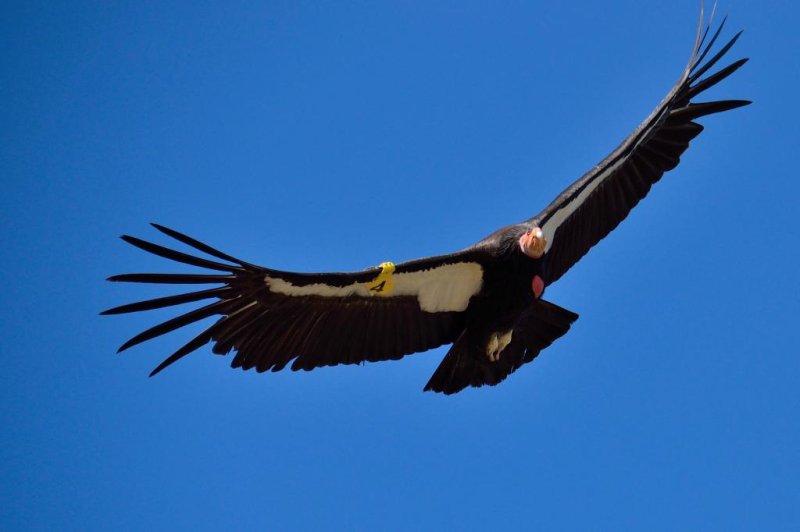The California Condor faces new challenges as birds along the California coast have been found to have higher levels of toxic chemicals which lower their reproductive success, a new study said. Photo by Andriy Blokhin
LOS ANGELES, Aug. 10 (UPI) -- The California condor, once brought back from the edge of extinction, is struggling in the wild again due to habitat loss and exposure to toxic chemicals, a new study finds.
Despite the success of the captive-breeding program, condors along California's central coast near Big Sur have ingested various toxic chemicals that scientists have linked to thin eggshells.
The findings, published this week in the journal Environmental Science and Technology, show about 40 percent of sexually mature condors have had some exposure to DDE, a form of DDT, a pesticide banned in the United States in the early 1970s and linked to the decline of the bald eagle and peregrine falcon.
Research showed the condor, a scavenger that often feeds on the carcasses of other animals, including marine mammals like sea lions, also had higher levels of polychlorinated biphenyl, or PCBs, than condors who lived inland. The chemicals build up in the bodies of those animals as they eat contaminated fish and are then passed on to the condor when it eats the sea lion.
Scientist Lloyd Kiff, wrote of DDE's peril to condors in 1979, but his work was questioned at the time.
"It turns out that it was probably on the mark," said supervisory wildlife biologist Joseph Brandt of the California Condor Recovery Program, "because what we're seeing now is very, very comparable to what Lloyd saw back in the late '70s."
Overall, condors on the coast tend to have a higher survival rate than inland condors, but scientists are replacing the eggs of some birds with those from birds in captivity. But it might not be enough to keep up with low reproduction rates. Even birds in captivity typically only lay one egg every two years.
More than 420 condors remain in the world, with about half in the wild in California, Arizona and Baja California, Mexico. The other half live in breeding programs in California, Arizona, Utah and Mexico the U.S. Fish and Wildlife Service said.















